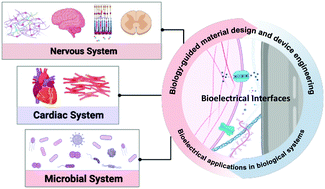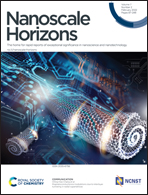Biology-guided engineering of bioelectrical interfaces
Abstract
Bioelectrical interfaces that bridge biotic and abiotic systems have heightened the ability to monitor, understand, and manipulate biological systems and are catalyzing profound progress in neuroscience research, treatments for heart failure, and microbial energy systems. With advances in nanotechnology, bifunctional and high-density devices with tailored structural designs are being developed to enable multiplexed recording or stimulation across multiple spatial and temporal scales with resolution down to millisecond–nanometer interfaces, enabling efficient and effective communication with intracellular electrical activities in a relatively noninvasive and biocompatible manner. This review provides an overview of how biological systems guide the design, engineering, and implementation of bioelectrical interfaces for biomedical applications. We investigate recent advances in bioelectrical interfaces for applications in nervous, cardiac, and microbial systems, and we also discuss the outlook of state-of-the-art biology-guided bioelectrical interfaces with high biocompatibility, extended long-term stability, and integrated system functionality for potential clinical usage.

- This article is part of the themed collection: Recent Review Articles


 Please wait while we load your content...
Please wait while we load your content...
